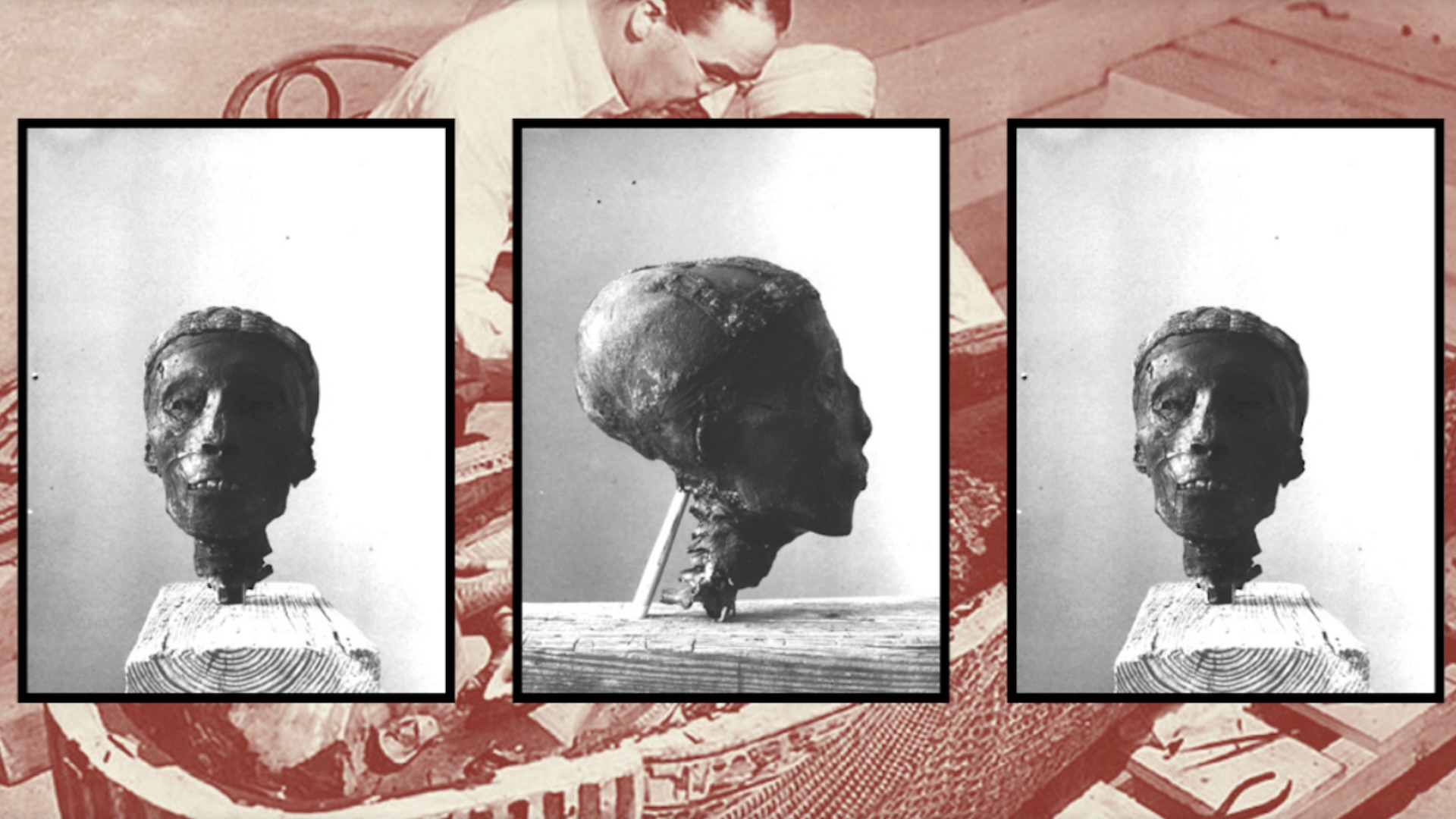'Hot knives and brute force': King Tut's mummy was decapitated and dismembered after its historic discovery. Then, the researchers covered it up.
Irreversible damage was done to the pharaoh’s body.

November 2025 marks 100 years since archaeologists first examined Tutankhamun's mummified remains. What followed wasn't scientific triumph — it was destruction. Using hot knives and brute force, Howard Carter's team decapitated the pharaoh, severed his limbs and dismembered his torso. Then they covered it up.
Tutankhamun's tomb was first discovered in the Valley of the Kings by a team of mostly Egyptian excavators led by Howard Carter in November 1922. However, it took several years for the excavators to clear and catalogue the tomb's antechamber – the first part of what would become a decade-long excavation.
This meticulous work, as well as delays caused by friction between Carter and the Egyptian government, meant that it wasn't until 1925 that Tutankhamun's remains were uncovered. This milestone whipped up another wave of what has been termed "Tutmania" after the tomb's initial discovery generated a wave of popular fascination for Egyptian archaeology.
When Carter's team eventually opened Tutankhamun's innermost coffin, they found the pharaoh's body fused to the casket by a hardened, black, pitch-like substance. This resin was poured over the wrappings during burial to protect the body from decay.
Carter described the corpse as "firmly stuck" and noted that "no amount of legitimate force" could free it. In a desperate attempt to soften the resin and remove the body, the coffin was exposed to the heat of the sun. When this failed, the team resorted to hot knives, severing Tutankhamun's head and funerary mask from his body in the process.

The autopsy that followed was devastating. Tutankhamun was left "decapitated, his arms separated at the shoulders, elbows and hands, his legs at the hips, knees and ankles, and his torso cut from the pelvis at the iliac crest". His remains were later glued together to simulate an intact body — a macabre reconstruction that concealed the violence of the process.
Egyptologist Joyce Tyldesley has pointed out that this destruction is conspicuously absent from Carter's public account of the autopsy. It is also absent from his private excavation records, which are available at the University of Oxford's Griffith Institute and online.
Get the world’s most fascinating discoveries delivered straight to your inbox.
Tyldesley suggests that Carter's silence may reflect either a deliberate cover-up or a respectful attempt to preserve the dignity of the deceased king. His omissions, however, were documented in photos by the archaeological photographer Harry Burton. These shots offer a stark visual record of the dismemberment.
In some of Burton's images, Tutankhamun's skull is visibly impaled to keep it upright for photography. These images sit in grim contrast to the one Carter chose for the second volume of his work detailing the excavations, The Tomb of Tut-Ankh-Amen, published in 1927. In this sanitised image, the pharaoh's head is wrapped in fabric, concealing the severed spinal column, presenting a more palatable view for public consumption.
As we reflect on the centenary of this examination, it is worth reconsidering the legacy of Carter's excavation, not just as a landmark in Egyptology, but as a moment of ethical reckoning. The mutilation of Tutankhamun's body, obscured in official narratives, invites us to challenge narratives of archaeological triumph and to look back on the past with a more critical view.
"Today has been a great day in the history of archaeology," Carter wrote in his excavation diary on November 11 1925, when the medical examination of Tutankhamun's remains began. But the archival evidence suggests something far more morally complicated, even grisly, lying behind the seductive glint of gold.
This edited article is republished from The Conversation under a Creative Commons license. Read the original article.

Eleanor Dobson is an Associate Professor in Nineteenth-Century Literature at the University of Birmingham, where she currently works on the reception of ancient Egypt in the nineteenth and twentieth centuries. She teaches literature from the late eighteenth century to the present, with particular focus on the Gothic genre, the natural world, gender and sexuality.
You must confirm your public display name before commenting
Please logout and then login again, you will then be prompted to enter your display name.
